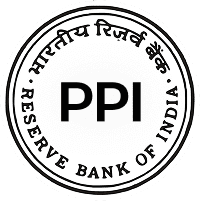Introduction
Have you ever thought about how businesses determine the reward system when at least a part of the performance target is reached? Minimum Variable Pay (MVP) is the one to answer this question.
Employee compensation packages today go beyond fixed salaries to include variable components that drive motivation, productivity, and retention. MVP assures that each employee will get a minimum portion of their variable pay, thus ensuring security and fairness in the pay structure.
Knowing MVP is very significant not only for companies but also for HR experts and employees, as it leads to formulating rewarding pay packages. In this blog, we will discuss the different aspects of MVP, such as its meaning, purpose, types, examples, and proper application to manage compensation effectively.
What is MVP
MVP Full Form
Some people confuse MVP (Minimum Variable Pay) with the product term ‘Minimum Viable Product’, but in HR, MVP stands for Minimum Variable Pay. To put it simply, MVP is the minimum guaranteed share of variable pay on top of the basic salary that the employee receives. While bonuses and incentives are fully performance-linked, MVP ensures employees receive a guaranteed payout even if targets are only partially met.
This element is critical in enterprises where structured performance-based compensation systems are in place since it promotes fair and motivating conditions for the workers. By securing a minimum payment, organizations can continue to enjoy employees’ trust and good moods while at the same time driving for better performance.
What is MVP in Business
The MVP in the business context connects the employee’s compensation to the performance outcomes. It is a method of rewarding workers that does not fully meet the company’s criteria, like sales targets, project completions, or productivity benchmarks. This allows the company to maintain a good atmosphere of motivation, plus a controlled risk situation. Employees feel reassured about their financial stability when they know that their efforts will be rewarded with at least a minimum variable payout. In this way, they feel less pressure and stress that comes with full performance-based payments. At the same time, organizations motivate workers to reach higher performance levels since surpassing the goals usually results in more variable rewards beyond the MVP.
Purpose of MVP
When firms realize the purpose of MVP, they can then come up with compensation packages that are fair, motivating, and in harmony with the organization’s goals. Main reasons for using MVP are as follows:
Provide Financial Stability
MVP’s primary purpose is to guarantee employees’ financial stability. The employee who does not meet all performance targets is still entitled to a minimum variable component plus the fixed salary. This financial assurance minimizes employee stress and uncertainty since they are assured of being able to meet their financial obligations, and at the same time, they are motivated to improve their performance.
Encourage Motivation
Furthermore, MVP functions as an instrument that motivates employees. Recognition of goals reached partially gives rise to a sense of accomplishment among the workers, who, otherwise, if not awarded the full target, would feel that their input was not comparable to that of the recognized ones. Such recognition cultivates a healthy workplace and facilitates the performance of workers at a great level, which keeps them interested and linked to the company’s goals.
Synchronizing Employee Goals with Business Objectives
Aligning employee efforts with company goals is one of the most significant roles of MVP. By attaching the minimum variable pay to particular performance indicators, entities guarantee that their workforce will focus on activities that directly drive business growth. Consequently, this sets up a scenario from which both sides will benefit: the employees will be recognized and paid well for their contribution to the success of the organization, and the company will experience an increase in productivity and attainment of goals.
Retention Support
MVP has the potential to be a powerful tool in the battle for talent. The minimum variable component that is guaranteed makes the compensation packages more appealing and competitive. Employees consider organizational performance and rewards as equitable if they are treated that way, and so they will not leave the company, which in turn means that the organization will have to spend less on hiring and training since it will keep the existing staff in line with business continuity.
Types of MVP
Minimum Variable Pay can differ according to the company’s strategy, the roles of the employees, and the performance indicators. Being aware of the various types of MVP available has the potential to lead to the design of compensation systems that are specifically meant for the employees by the business. Below are the primary types:
Performance-Based MVP
It is the kind of MVP that is linked in a straight line to the individual or team performance metrics. In the case of employees not fully meeting the performance goals, they still get a guaranteed minimum payout. Performance-based MVP secures that employees are rewarded for their effort and progress, thus keeping the motivation and engagement alive.
Sales-Target MVP
Salesmen usually get commissions and incentives as part of their overall remuneration. Sales-target MVP promises the payment of a part of the sales incentives, even if the employees do not meet the entire sales target. The method guarantees financial stability, which allows, at the same time, the sales teams to be motivated to perform better.
Project-Based MVP
For roles involved in project work, a project-based MVP guarantees a minimum payout according to the milestones reached. Employees get their reward for performing parts of a project successfully, which fosters progress and accountability, even if the project is not finished within the specified time.
Role-Based MVP
Some positions or organizational levels might have a guaranteed minimum variable component as part of their total compensation. This guarantees that the employees in important roles or at the senior level will be consistently recognized and compensated in a financially consistent manner, which reflects their strategic contributions to the company.
Hybrid MVP
A few companies implement a hybrid MVP scenario where they take the best out of performance-based, sales-target, and role-based MVPs. By doing so, they attain not only fair distribution of rewards across different roles and functions but also employee encouragement that goes for both individual and organizational targets.
Minimum Variable Product
Minimum Variable Product (MVP) is a term that HR and business find commonly used in their compensation structures to describe the smallest amount guaranteed to be variable and thus allocated to an employee. The fixed salary, for instance, is or rather stays constant, but the variable part is split up into pieces according to performance, sales, or project outcomes. MVP represents the portion of an employee’s variable pay that remains constant, even if the production goals are not met completely. This way, the employees get financial security and the company gets a guarantee of consistent high performance. Startups, Small and Medium Enterprises, and expanding firms particularly gain advantage from the definition of MVP, as they tend to put increased pressure on their teams to drive up sales. For example, if a sales team has commissions as the variable part of their salary, then with MVP, they are sure that they will get at least something, even if not all the sales targets are achieved. Also, project groups can be assured of getting their guaranteed amounts when they reach their milestones. When organizations define a Minimum Variable Product, they also create a transparent payroll, clear employee contracts, and less confusion in the matter of compensation. Employees are aware of the part of their variable pay that they can count on, thereby building trust, lowering turnover rates, and increasing job satisfaction. On the other hand, companies can manage their incentive plans in such a way that employee performance is at par with organizational goals, and at the same time, they have predictable payroll costs.
How to Build an MVP
An MVP that works well is created by a well-organized process that makes sure issues of fairness, unmotivated employees, and misalignment with the business goals are avoided. Here’s a detailed step-by-step method for making MVPs for workers:
Define Performance Metrics
The very first thing to do is to select measurable key performance indicators (KPIs) for every position. These metrics ought to express the duties and input of the worker. For instance, KPIs for a sales executive could be monthly income targets, number of client meetings, or deal closures, whereas a project manager may have milestones achieved, project completion timelines, and quality metrics. With clear metrics, it is guaranteed that the variable pay is closely linked to observable and fair performance indicators.
Determine Minimum Payout
As soon as the performance metrics are established, the next step for the employers is to determine the guaranteed variable portion. This amount should be justifiable at that role, industry standards, the company’s budget, and overall compensation policy. For example, an employee with a 20% variable component might have an MVP of 5–10% so that he/she still get a reward for the partial achievement of the goals. A proper setting of minimum will guarantee financial predictability for the employees and a manageable cost for the company at the same time.
Align with Company Goals
The alignment of the MVP with the organizational goals is very important. All the payments made by the company should be in the same direction as the bigger business goals. For example, giving out rewards for sales or project completion is linked to revenue and productivity directly. Thus, this alignment is likely to make the employees, not only the motivated ones, but also the ones driving the company towards success.
Communicate Clearly with Employees
When employing an MVP, one important thing is openness. Companies will have to inform the workers very well about the structure, the conditions, and the methods used for the calculations. The workers should be aware of the performance pay they will get, the lowest payout, and the situations in which it will apply. The absence of clear communication will result in confusion, the building of mistrust, and the weakening of engagement.
Assess Periodically
The last point is that companies need to regularly check the MVP structure. The ups and downs in the market, performance numbers, and company growth can all demand changes to keep the MVP lively and competitive. Periodic assessment also allows companies to benchmark their MVP structures against industry standards.
Example of Successful MVPs
Several companies and various corporations were capable of effectively handling an MVP (Minimum Variable Pay) system and maintaining employee motivation without losing their financial balance. Usually, for the sales divisions, the companies make the commitment of at least 10% of the expected commission as a minimum, which means that in the event of a partially achieved monthly target, the sales employees will still get a reward for their efforts.
This method not only helps to maintain high spirits but also inspires the team to keep performing every day in the month. In the case of new businesses, founders very often resort to the MVP system to keep the employees on board while managing the limited cash available for operational purposes. Startups can offer a guaranteed portion of variable pay to the right talent and have them perform efficiently without the risk of financial strain.
At the same time, in a project-based company, the developers or team members may receive a minimum variable payout for reaching project milestones, no matter the speed or final delivery of the project. This guarantees acknowledgment for the work done and lessens the difficulty that comes with setting strict deadlines that sometimes hinder a more productive and engaged workforce.
In every sector, the use of MVPs has been a great help to the management in the areas of employee performance, aligning with business goals, trust building, as well as creating a compensation system that is predictable and transparent. With the help of tools like EnKash, it becomes even easier to monitor these payouts, automatically calculate them, and provide clear reports, thus making it convenient for the organizations to uphold consistency and fairness in their MVP structures while effectively motivating employees.
Benefits of MVP
Minimum Variable Pay (MVP) Implementation has several benefits:
Guaranteed Employees’ Financial Security
The very first and foremost advantage that MVP guarantees is the financial security of the employees. To put it simply, the employees who only partially reach their performance targets will still have the minimum variable part of their pay as the ‘security’. Thanks to this guarantee, the employees experience less financial pressure and can thus concentrate on their job without being afraid of unsteady income. In the startups and SMEs’ cases, MVP is not only a security measure but also a trust-building and reliability path while the business is growing.
Increased Motivation and Productivity
MVP is a source of motivation in the sense that it rewards an employee for his/her contribution even when the target is not fully met. The assurance of a baseline reward empowers the worker to put in a steady flow of effort, thus increasing the productivity of the whole workforce. The non-material recognition of employees through variable pay brings about the enhancement of morale, which, in turn, has a positive effect on the performance of the team and the company as a whole.
Encourages Goal-Oriented Performance
MVP is coupled with KPIs, which are the main indicators of performance; as a result, the employees are directed towards performing the activities that are in line with the company’s objectives. With this, the effort is not only kept constant, but also the focus is on the activities that create results. This setup, through the guides, lguides employees toward high-impact areas, thus paving the way for the companies to reach their strategic goals quickly and efficiently.
Supports Retention of Top Talent
The MVP strategy makes it possible for companies to offer more appealing and competitive compensation packages. Employees are less likely to leave a company that is committed to providing a minimum reward for their efforts, thus reducing turnover rates. The retention of skilled employees not only cuts down on hiring costs but also keeps the transfer of knowledge within the organization, which is vital for its growth.
Provides Transparency and Fairness in Compensation
MVP contributes to the fairness of the payroll system by unequivocally specifying the minimum variable part of the remuneration structure. The workers can see what kind of rewards to expect from the company, bringing down the uncertainty and promoting the acceptance of a transparent company culture. This situation of clear-cut trust between the employees and the company enhances employee contentment and contributes to a pleasant working atmosphere.
Conclusion
Minimum Variable Pay (MVP) is a very important factor in the implementation of the latest compensation strategies, which give financial security to employees and, at the same time, effectively encourage them to work harder. By not only identifying but also assuring employees of the existence of the variable component, the employers can create a motivating environment around the employees, and unite their individual efforts with the organization’s goals, besides keeping the payroll structure fair and transparent. Adoption of the MVP approach not only aids in attracting and retaining skilled workers but also leads to a productive, target-oriented workplace environment. With the help of tools like EnKash, the companies find it easier to manage their payroll, monitor the variable payments, and ensure the correctness of the financial reports. All in all, the MVP approach is a double-edged sword in the sense that it not only uplifts the morale of the workforce but also paves the way for the expansion of the business through the utilization of efficient operations.
FAQs
1. What is MVP in a business context?
MVP, or Minimum Variable Pay, is the fixed amount of variable remuneration that employees get, no matter how much of the complete performance target they have achieved.
2. Is MVP similar to a bonus?
Not really. MVP is an assured share of the variable pay; however, a bonus is mostly at the discretion of the management and is completely based on performance.
3. Can MVP support the performance of the employees?
Certainly, because the workers are aware that they will receive a guaranteed reward, they will be more motivated to outperform the targets and thus make higher appeals for incentives.
4. Is MVP the same as the fixed salary?
Yes, fixed salary is the pay guaranteed, whereas MVP is the minimum guaranteed portion of variable, performance-related pay.
5. What is the method of calculating MVP?
It is usually determined as a percentage of the total variable pay calculated based on performance metrics, role, and the company’s policy.








